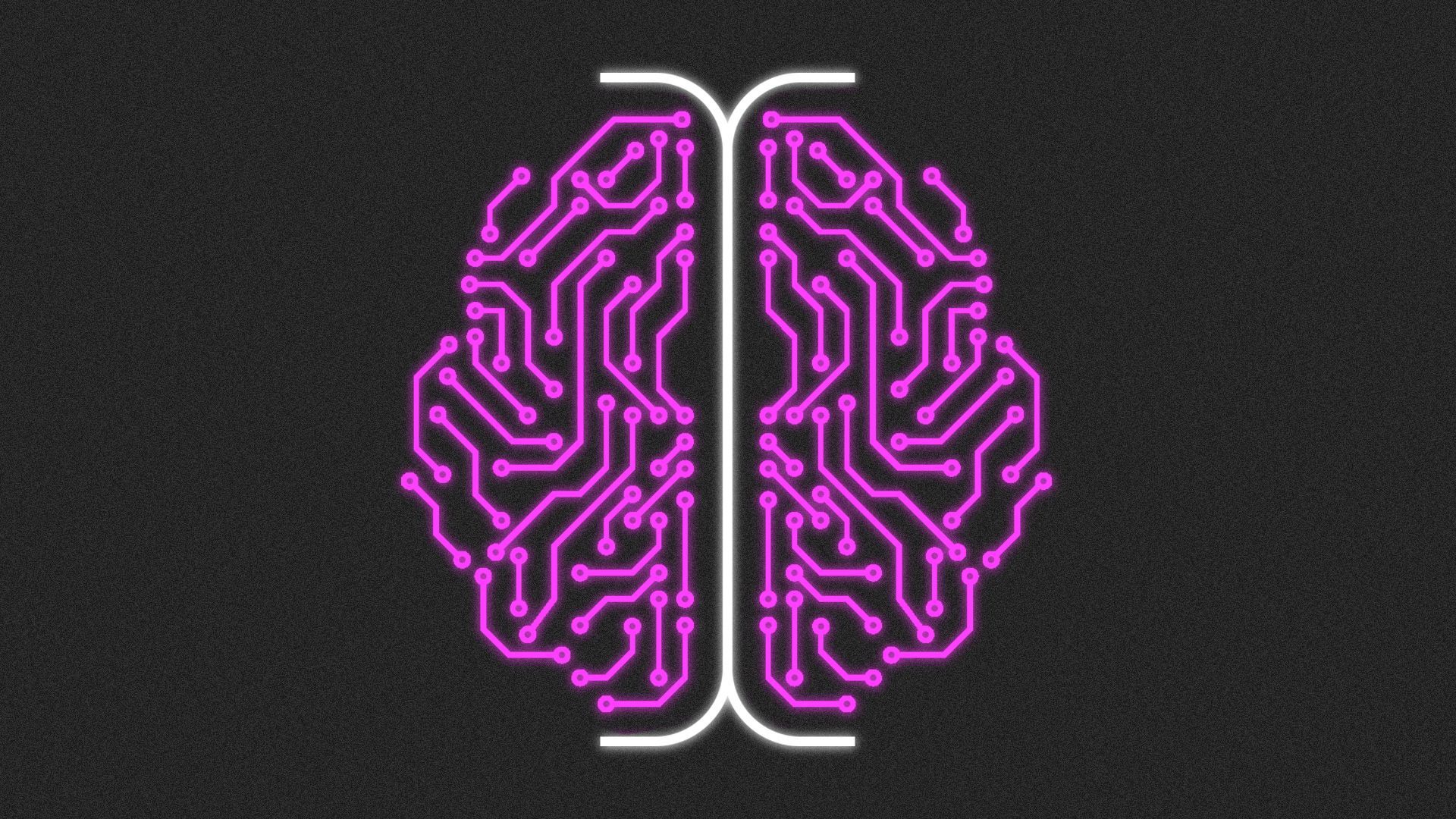 Illustration: Aïda Amer/Axios
Illustration: Aïda Amer/Axios
OpenAI researchers believe the company is closing in on building AI that can perform human-level “reasoning,” per reports out of Bloomberg and Reuters.
Why it matters: AI experts disagree over whether today’s large language models, which excel at generating text and images, will ever be capable of broadly understanding the world and flexibly adapting to novel information and circumstances.
Driving the news: OpenAI has internally shared definitions for five levels of artificial general intelligence (AGI), according to Bloomberg. An OpenAI document Bloomberg reproduced defines the levels:
-
Chatbots: AI with conversational language
Reasoners: human-level problem-solving
Agents: systems that can take actions
Innovators: AI that can aid in invention
Organizations: AI that can do the work of an organization
State of play: At a company meeting last week, per Bloomberg, OpenAI leaders told staff their systems currently worked at level 1 but were “on the cusp” of achieving level 2.
Separately, Reuters reported details of a long-rumored project at OpenAI aimed at developing AI that can reason at a human level, plan ahead, work out problems with multiple steps and independently perform “deep research.”
The project, named “Strawberry,” is the current version of an effort Reuters reported last year under a different name, “Q*.”
Between the lines: Rumors of a major breakthrough at the company had spread widely in the days leading up to the OpenAI board’s failed effort to oust CEO Sam Altman in November 2023.
A day before the board announced his firing, Altman told an audience at an Asia-Pacific Economic Cooperation event that during the “last couple of weeks” he’d been “in the room” as the company “push[ed] the veil of ignorance back and the frontier of discovery forward.”
Yes, but: Eight months later, OpenAI’s latest product is a new version of ChatGPT, GPT-4o, that combines text and visual modes in new, advanced ways. Human reasoning remains somewhere on the horizon.
Catch up quick: OpenAI’s mission is to “ensure” that AGI “benefits all of humanity,” but descriptions of AGI have long been vague.
AI optimists expect that AGI will directly evolve out of today’s generative AI large language models as they get bigger, train on larger pools of data and get boosts from innovations in post-training techniques for enhancing their capabilities as well as limiting their errors and tendency to “hallucinate.”
Skeptics believe the LLM approach will hit a wall by failing to make the leap to human-level reasoning before the size, cost, energy use and data requirements of ever-bigger LLMs outstrip the resources AI makers can afford.
Zoom out: OpenAI’s five-level AI ladder resembles similar schemes for understanding progress toward fully autonomous vehicles.
A paper by researchers at Google’s DeepMind, first posted last year, outlined another five-level breakdown for measuring AI advances.
Fun fact: Neither OpenAI’s nor Google’s five levels make reference to the possibility that AI systems might become autonomous — able to act on their own initiative without human direction.
Also, neither addresses the even farther-out prospect that AIs might become sentient or self-aware.
Our thought bubble: OpenAI, along with Google, Meta, Anthropic and other key competitors, is spending billions to “get to” AGI, so it’s good that the company is devoting thought and care to defining what it means by that vague term.
The catch is that these companies might just be transferring their hand-waving from one set of words to another.
“Human-level problem solving” and “reasoning” could be as tough to specify as “artificial general intelligence.”
